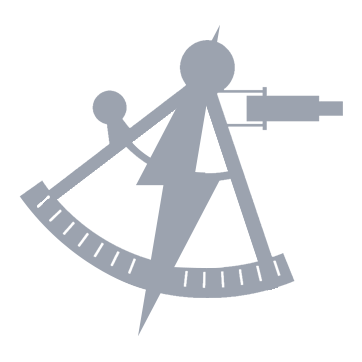Summary
Captain Noah Armstrong is the current commanding officer of the starship Antares. With a tendency towards idealism, he is an experienced starship captain with a marked preference for scientific and diplomatic solutions to problems rather than tactical ones. His background is in planetology, and he prefers to get his hands dirty on planetary surveys where possible.
Appearance
At 1.86 meters tall and weighing 88 kilograms, Armstrong is both tall and muscular. He works out every day at least once, and often twice, and it shows in his impressive physique. Every measure the leading man aesthetic, he has a square jawline, excellent posture, and bright blue eyes that stand out with his dark hair.
Personality
If there’s anyone who’s able to come up with a rousing speech about the Federation’s values on the spot, it’s Noah Armstrong. He believes very sincerely in what the Federation stands for, and he’s not above relying on this idealism to see him through a dark, often hostile universe. He is not at all naïve, however, and so he is not idealistic in the sense that he expects everything to conform to his worldview, but more in a self-righteous sense, representing some of the arrogance that has come to represent the Federation as much as its benevolence. He is extremely self-assured, thanks to the success of his career to this point. While he has only been in the center seat for a few years, he is certainly not green and displays an aura of command while on the bridge. Neither lax nor particularly beholden to the exact letter of every regulation, he has few triggers other than disrespect, of which he is extremely intolerant.
History
Early Life (2361—2379)
Noah Armstrong was born on Penthara IV in 2361, the oldest of three brothers. A sleepy agricultural colony, it was the perfect place for a child to grow up with wide-open spaces, gentle climates, and a lack of native predator species. Energetic and athletic from a young age, Armstrong was always the leader with his younger brothers, and they had adventures in the forests that bordered the settlement. In 2368, Armstrong witnessed the USS Enterprise clean the planet’s atmosphere of dust created by an asteroid impact, saving Penthara IV from massive global cooling and the destruction of the colony, which began his interest in science, though he wouldn’t be able to articulate that connection until much later in life.
Armstrong was a serious, committed student in primary and secondary school, knowing that he had to set an example for his brothers. There, his natural athleticism allowed him to play on any sports team he wanted, though his favorites were rugby and lacrosse, for which his above-average height made him very suited. His competitive streak developed early, and several times he injured himself in sporting events by pushing himself too hard, too quickly, but as he learned to recognize his limits he got even better at pushing them.
By age fifteen, there was no doubt in Armstrong’s mind what he wanted to do: enter Starfleet. He entered the Starfleet Academy Preparatory Program (SAPP) and was granted a seat at Starfleet Academy starting in 2379.
Starfleet Academy (2379—2383)
Thanks to the taste of Starfleet life he got with SAPP, the rigor and structure of Starfleet Academy were easy to adapt to, but Armstrong consistently felt like a small fish in an enormous pond around the best minds of his generation, when he’d been accustomed to being a large fish in the tiny, provincial pond that was Penthara IV. Early in his first year, he decided to study planetology, partially because of the fascination he still had with the miracle the Enterprise had pulled off, but mostly because he knew it would give him the best chance of actually being part of landing parties when studying new planets. It was hard to collect mineral and fossil samples from orbit, after all.
While not at the very tip-top of his class, Armstrong acquitted himself very well in his academics. Where he excelled, however, was in the physical and survival training aspects of Starfleet academy. His natural athleticism combined with a childhood spent on a relatively undeveloped planet made him a natural in the academy’s famous ‘find your way home’ exercises, and his instructors noted his proficiency at making sure the rest of his team was successful as well. Several times, he considered moving into the command track, but he was committed to his original plan: become a planetology specialist so that he could put his feet on as many planets as possible.
USS Paramount (2383—2386)
Upon his graduation as an ensign in 2383, Armstrong was posted to the California-class utility cruiser Paramount as a general duty science division ensign. The Paramount was assigned to second contact engineering support duties, so he wouldn’t be the first person on any of the worlds they were visiting, but he was still awe-struck by the chance to finally get out into the cosmos. Armstrong was noted for completing his tasks exceptionally quickly and for showing initiative beyond what was expected of him, so he was promoted to junior lieutenant after a year on the ship, and given a spot directly in the planetology department.
During his second year aboard the Paramount, Armstrong led a team studying unusual tectonic activity in what should have been a dead D-class moon. He and his colleagues discovered a new type of macro-scale lifeform, which was burrowing through the moon and consuming carbonaceous components, thus displacing the rock and creating the appearance of tectonic activity. It was here that Armstrong first felt that spark of discovery and the satisfaction of solving a mystery, though the remainder of his time aboard the Paramount was largely routine, with the ship mainly handling deep space engineering projects far from any planets in late 2385 and most of 2386.
USS Dyson (2386—2390)
Promoted again in 2386, Armstrong accepted a posting to the science vessel Dyson in 2386. Though a much smaller ship, it had much more interesting assignments. Well, more interesting from the perspective of someone who was trained to study planets. As head of planetology, he oversaw the complete survey of several M-class worlds, before promotion to assistant chief science officer after two years. He continued to demonstrate the leadership qualities his instructors had noticed at the academy, proving to be a competent and popular member of the vessel’s small crew.
In 2389, Armstrong was leading an away team on a Class-O planet when an unexpected tsunami-type wave was detected. Mineralogical features on the planet’s surface prevented transport, and the wave destroyed the team’s shuttle, but Armstrong managed to get his four-person away team to a high enough point to survive. He kept them alive for twelve hours, as the Dyson developed a solution to send another shuttle down to retrieve them in increasingly difficult weather conditions.
USS Arcturus (2390—2397)
With a commendation and a promotion, Armstrong joined the crew of the USS Arcturus, an aging Ambassador-class heavy cruiser. As the chief science officer, he oversaw a department of over 160 specialists and technicians, which were put to great use on the ship’s exploratory mission in the Beta quadrant. After just a few weeks aboard, the captain selected him to also become second officer, giving him even more input on the ship’s operations. He accompanied almost every away team in this capacity, doubling the number of planets he was able to visit within just a few years aboard the ship.
When the first officer was promoted to a command of their own, Amrstrong was in turn promoted and became executive officer aboard the Arcturus for the final four years of that ship’s service history. He served as the link between a more aloof, reserved captain and the crew, with his natural wit and charm serving him well. His experience as a scientist allowed helped him keep an objective eye on the crew’s performance, however, and he led them to several shipwide commendations for efficiency. With his third pip, Armstrong was now in the running for command himself, an opportunity which came in 2397 when the Arcturus was decommissioned.
USS Boone (2397—2400)
As a captain, Armstrong’s first command was the Boone, a newly-commissioned Nova-class surveyor much like the Dyson he had served on seven years prior. After a short shakedown cruise, the Boone was assigned to serve as a partner starship to an Intrepid-class light explorer, following the larger faster ship to delve more deeply into her discoveries. While he initially resented playing second fiddle, he began to see the value in working as part of a team, especially when his team started to receive regular praise for their detailed, time-consuming work from Starfleet Command.
USS Columbia & Antares (2400—Present)
In January of 2400, Armstrong was assigned for a single mission to the USS Columbia, before gaining his next permanent command, the Intrepid-class USS Antares later that year.
Service Record
| Date | Position | Posting | Rank |
|---|---|---|---|
| 2379 - 2380 | Planetology Student | Starfleet Academy |
 Cadet Freshman Grade Cadet Freshman Grade |
| 2380 - 2381 | Planetology Student | Starfleet Academy |
 Cadet Sophomore Grade Cadet Sophomore Grade |
| 2381 - 2382 | Planetology Student | Starfleet Academy |
 Cadet Junior Grade Cadet Junior Grade |
| 2382 - 2383 | Planetology Student | Starfleet Academy |
 Cadet Senior Grade Cadet Senior Grade |
| 2383 - 2384 | Science Officer | USS Paramount - (NCC-75570) |
 Ensign Ensign |
| 2384 - 2386 | Planetology Officer | USS Paramount - (NCC-75570) |
 Lieutenant Junior Grade Lieutenant Junior Grade |
| 2386 - 2388 | Head of Planetology | USS Dyson (NCC-72233) |
 Lieutenant Lieutenant |
| 2388 - 2390 | Assistant Chief Science Officer | USS Dyson (NCC-72233) |
 Lieutenant Lieutenant |
| 2390 - 2393 |
Chief Science Officer Second Officer |
USS Arcturus (NCC-49801) |
 Lieutenant Commander Lieutenant Commander |
| 2393 - 2397 | Executive Officer | USS Arcturus (NCC-49801) |
 Commander Commander |
| 2397 - 2400 | Commanding Officer | USS Boone (NCC-80751) |
 Captain Captain |
| 2400 | Commanding Officer | USS Columbia (NCC-76991) |
 Captain Captain |
| 2400 - Present | Commanding Officer | USS Antares (NCC-74601) |
 Captain Captain |

 Bravo Fleet
Bravo Fleet






